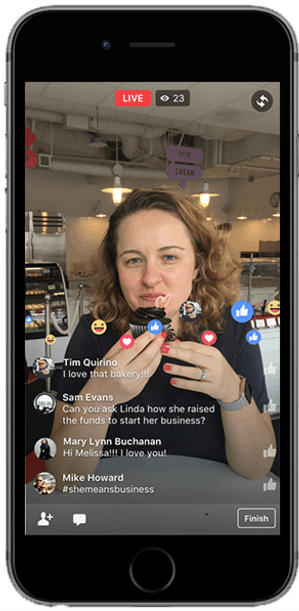- 15 minute read
- Digital Marketing
Video Marketing Software, Equipment & Strategies for Tour & Activity Operators
All Skill Levels
Get a behind-the-scenes-look into FareHarbor's 2024 season

Emerging as one of the tourism industry’s biggest trends, video should be a central piece of your digital marketing strategy in 2020 and beyond. Video has become a dominant and valuable type of social content for businesses. Promoting your company through video is essential to building a unique brand, engaging with customers, and driving conversions.
In fact, 64% of consumers make a purchase after watching a branded video, and people who use video as a marketing tool grow revenue 49% faster (Hubspot). Video has grown from a single digital marketing tactic to a complete business and branding strategy, and you can get started with video quickly and easily.
If you’re worried about hiring videographers or purchasing expensive equipment to shoot videos, we’ve got good news — you can record a high-quality 4K video with just a smartphone! This form of digital marketing truly is cost-effective and accessible to businesses of all shapes and sizes.
This guide will cover how to plan your video, what types of marketing videos you should be producing, where to publish them, how to promote them, and more. You’ll be ready to grab a phone and start rolling in no time. Action!
Every great video begins with a game plan. Keep the following topics in mind when you start shooting, for a hassle-free filming experience and a high-quality video that’s ready to share online!

Determining what type of videos to make depends on who your target audience is. Similar to other digital marketing strategies, it’s important to plan content around a target audience.
For example, if you’re marketing to couples who might want to book a sunset cruise, the videos should convey romance, elegance, and exclusivity. If your business usually targets budget travelers, engage them with a video highlighting money-saving travel tips in your area.
Consider your target audience as a general guide of who your typical customer is to determine what type of content would interest them.
Some videos will likely be quick and casual, featuring clips of your tours or shots of a local area. But if you’re planning to go in-depth on a topic or interview an owner or tour guide, it’s a good idea to come up with a loose script to use ahead of time. While you want the video to come across as unscripted, having a general outline of the video can inform a lot of shooting decisions.
When it comes to finding talent to star in the video, be sure to choose somebody who is friendly and enthusiastic so their energy comes across in the video. You’re trying to attract new customers, so the people representing your business through the video should make potential customers feel good about their decision to book with you.
The setting of a video says a lot about your business. Settings may differ depending on the type of video you’re planning to produce (more on this later), but no matter where you shoot, be sure the background looks interesting and is in line with your brand tone.

For example, if your company runs hiking tours and you want to give viewers a behind-the-scenes look at one of your activities, perhaps film some hiking segments on the trail or interview a tour guide with a beautiful mountain view as the backdrop.
If you’re shooting indoors, choose an interesting backdrop that says something about your business without being too distracting. If your business offers kayak and paddleboard rentals, then film where you store the equipment so people can see your wide array of offerings.

Pro-tip: If you’re shooting on a smartphone, be sure to flip the phone horizontally for the best viewing experience. Video shot vertically will result in not being able to watch your video at full size on a monitor or TV screen.
Now that you’ve gone through the initial considerations, use these common video types for tour operators to cement a video marketing plan.
Brand videos aim to build awareness around your company and attract the right audience. Think of them as your business’ about us content in video format — these videos usually showcase your business’ mission, vision, or services on a high level.
Attract customers and build intrigue by telling the audience who you are. Include shots of your tours, surroundings, tour guides, and anything else that defines your brand. This can serve as the first touchpoint for many viewers, so help them get to know you!
Just like online reviews, testimonials are essential for showing potential customers that their peers have participated in your tours and activities and had a great time! Happy customers are the best advocates and can offer insights about your tours that you may not have realized on your own.
Consider featuring repeat guests in a fun video that shows them explaining what they loved about their experience and what makes your business the best. Ask them if they have any tips to share with future guests!
 Live videos are where the magic really happens! This is your chance to go behind the scenes and give viewers a special look at your company or activities. Live-stream a tour while it’s happening and encourage viewers to comment with questions.
Live videos are where the magic really happens! This is your chance to go behind the scenes and give viewers a special look at your company or activities. Live-stream a tour while it’s happening and encourage viewers to comment with questions.
Live videos draw more engagement – viewers spend up to 8.1 times longer than with regular video (Hubspot). Facebook, Twitter, and Instagram are all great places to get started with live videos, especially if you have a strong social following.
![]() Check out our guide on virtual platforms to learn more about getting started with Facebook Live and Instagram Live.
Check out our guide on virtual platforms to learn more about getting started with Facebook Live and Instagram Live.
Is your business hosting an event? Perhaps you have a holiday event tradition, are hosting a fundraiser, or are partnering with another local business for a joint gathering. Video is a great way to promote special events beforehand and even after the event (it’s never too early to generate interest for next year’s event). Produce a highlight reel, interview guests, or recap the event with fun graphics and animations.
All that planning and shooting has paid off — you’ve got a finished product that is ready to share! But where should you upload the video?
YouTube is the second-most visited website, and it’s quickly becoming the world’s second-largest search engine. Uploading videos to YouTube means you can embed them on your FareHarbor website as well as social media pages and other platforms. Start with our YouTube Checklist!
 When including a YouTube video on your website landing page, it encourages people to spend more time with your business. In fact, using videos on landing pages increases conversions by 86% (Hubspot). By creating a branded YouTube channel with multiple videos, you give viewers the chance to view all your content in one place. When a video stops playing, the next video to load is also from your arsenal of content, so people can learn more about who you are as a company.
When including a YouTube video on your website landing page, it encourages people to spend more time with your business. In fact, using videos on landing pages increases conversions by 86% (Hubspot). By creating a branded YouTube channel with multiple videos, you give viewers the chance to view all your content in one place. When a video stops playing, the next video to load is also from your arsenal of content, so people can learn more about who you are as a company.
Why does all this screen time matter? The more time a potential customer spends with your brand, the more likely they are to make a booking. If you’re ready to dive into video marketing, set up a company YouTube account today. You can also create an account on Vimeo or publish videos on social media profiles.
Ready to roll? Start by thinking about what aspects of your tours and activities would be best captured on video and go from there. For more topic ideas, try turning a blog post into a video or create a how-to video to help prepare guests for visiting your area. Start adding videos to a YouTube profile and watch viewers engage with your brand!
To learn more about how video fits into your digital marketing strategy, view our social media trends guide.